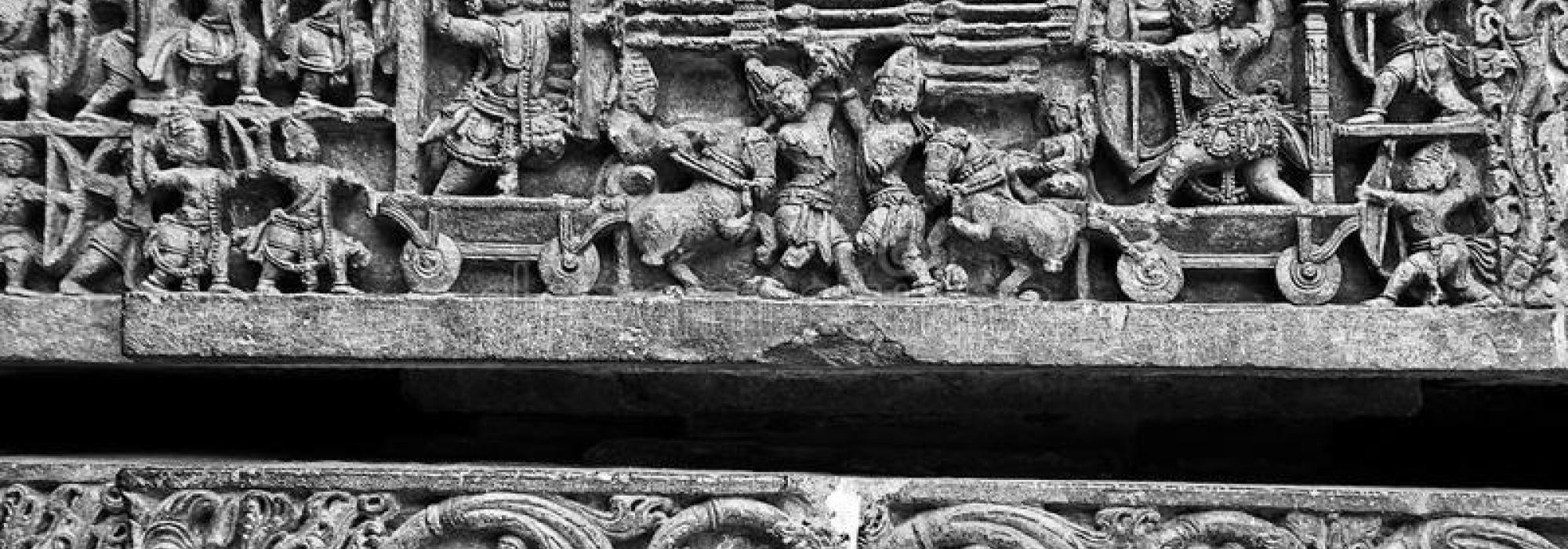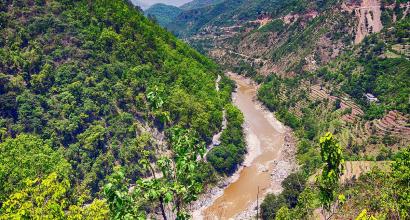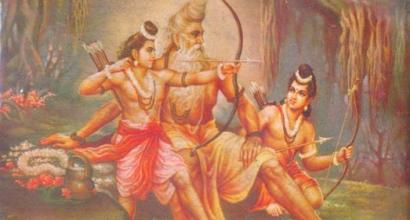When we say “human,” it also means “mind.” When we mean mind, it means worries and joys. When these worries and joys overflow in words, it becomes poetry. Because the human, the mind and words are always glued together, the older the human is in this world, the older is poetry. All races and languages in the world have been endowed with poetic literature proportional to the refinement in its respective learning. The chief feature that can be noticed in all such literature is “Rasa.” Rasa means the taste that one wants (rasa āsvādana snehanayoh – that which one wants to savour; that which is likeable). It is the Six Rasas in food. It is the Rasa in music. It is the sport of lovers. It is the Rasa of compassion that does not exist in cruel people and that which exists in people rooted in Dharma.
In common parlance, the word “Rasa” denotes the essence of an object or experience. The same thing holds true for the Vedas as well:
raso vai saḥ |
rasaggam hyevāyaṃ labdhvāSSnaṃdī bhavati || (Tattiriya Upanishad: 2-7)
The Paramatman is “Rasa.” Therefore, one feels joy through the experience of Rasa. That which provides joy is Rasa.
Maharshi Valmiki indicates the eminence of his poetry using the word, “Rasa.”
rasaiH shR^iNgaarakaaruNyahaasyaviirabhayaanakaiH |
raudraadibhishcha saMyuktaM kaavyametadagaayataam || (Balakanda: 4 - 6)
This ballad of Ramayana, with poetic sentiments of love, pathos, comic relief, courage, fear, anger and others, was sung by Lava and Kusha.
Elements like prosody, suggestion, and innuendo are devices and methods for generating Rasa.
Just like how the Rasa of food is to the taste buds, Rasa of music is to the ears, the Rasa of (physical) form and charm is to the eyes, in the same manner, the Rasa of poetry and art is endearing to the mind. However, there is a specialty in the Poetic Rasa: along with being endearing to the mind, it also purifies our lives. The Rasas of sound, touch, form, taste and fragrance available to the five sense organs provide pleasure. However, the Rasa of Poetry and Art not only provide pleasure to the mind, the field of consequence of the five senses, they also encompass the Jiva and have the capacity to impact the very nature of Jiva. In this manner, the work of poetry occurs on two planes:
- Entertainment
- Elevation of Life
Any poetry which does not stop merely at the first plane but embarks on the second work becomes Great Poetry (Mahakavya). The greater the life-elevating elements in it along with entertainment, to that extent it becomes a Mahakavya. The preeminence of poetry is derived from its capability to refine and elevate life. The abundance of this capability is the glory of Srimad Ramayana.
Elevation of life means the radiance of ethics. However, the radiance of ethics in poetry does not take the form of a direct discourse or preaching. It occurs through an invisible change of heart. This is the special strength of poetry. Providing direct expositions and discourses is the work of Ethics. Srimad Ramayana has not endeavoured to offer us this kind of discourse. It tells us a story. After listening to that enchanting story, after experiencing within ourselves the episodes contained in it, we inculcate discerning wisdom on our own. Maharshi Valmiki has not explicitly preached to us - “Worship Sri Rama,” “Serve Sita Devi,” “Follow Lakshmana,” “Seek refuge in Anjaneya.” However, when we listen to Maharshi Valmiki’s narrative, we automatically feel that the heroes of the story were indeed, truly eminent and worthy of emulation. This flood of elevated feeling within ourselves invoked by voluntary change of heart is the greatest help rendered by a Mahakavya. The Veda clearly, emphatically says, “Satyam Vada (Speak the Truth),” “Dharmam Cara (Follow Dharma).” Like an emperor, the Veda has the power to command. The path of poetry is not that of issuing commands. It is one which is imbued with persuasion. Sri Rama’s fidelity to truth is truly marvelous. Sita Devi’s loyalty to her husband is indeed lofty. Maharshi Valmiki’s poetry automatically invokes these feelings inside us without any external motivation. Therefore, poetry is akin to a lover’s words, effortless and pleasing, according to an ancient poet’s lines: kāṃtāsammitatopadeśayuje || (Kavyaprakasha: 1-2)
We’ve already seen that the Ramayana is neither a Sastra nor a biography. The clear elucidation of this topic is also important. In the present context, Sastra especially means:
- Dharma Sastra, Manusmriti, and so on.
- Philosophy—Sankhya, Vedanta etc
- Sciences—Astronomy, Medicine, Physics, Chemistry, Biology, etc.
When we say “biography,” it roughly corresponds to the English word, “history,” which includes episodes about a country, an individual’s life story, Government reports, newspaper reports and so on. The field of operation of Sastra and history is the intellect. The field of operation of poetry is the heart. This is the first distinction. Secondly, Sastra and history depend on external premises. The Sciences come under the scrutiny of such things as weight, size, cause-effect relationship, experimentation and result. History and biography akin to a court, require external proofs such as day, date, time, place, evidence and records. Poetry does not require any such external proofs but Inner evidence.
The Ramayana is not a biography or history but a historical poetry. When we view a real incident from an external perspective it becomes history—just History. When we regard it from the impact it has on the heart, it becomes poetry; poetry that has greater impact than merely imaginative poetry containing a fictional narrative. Because the Ramayana is a poetry has internalized history so beautifully, it has attained widespread acceptance as though it is real history. It is definitely a source material of history for us; but beyond that, it is also material for the refinement of our heart. It is the history of a country, yes; but more than that, it is also the history of the Inner Life of our people.
The student of poetry and literature finds an opportunity to observe two important tenets here:
- Willing suspension of disbelief
- While deriving meaning for words and sentences, the implied meaning is more important than the linguistic meaning.
Is it actually true that Ravana was endowed with ten heads? We can’t really say that we don’t believe this unless his photograph is shown. As far as the Ramayana is concerned, we must believe that Ravana indeed had ten heads. In poetry, the external fact is unimportant compared with the inner suggestion. Externality is merely a symbol. Ravana was extremely strong and supremely valourous – this is the essence the poet conveys. The ten heads is the device to suggest it. Here, ten does not mean nine plus one or eleven minus one. What needs to be grasped is this: Ravana alone was endowed with the combined strength of four or six ordinary people. In this manner, if we don’t grasp this inner essence of external incidents and features, Ravana’s ten-headed attribute, the conversation of Hanuman, his leaping over the ocean: the incongruities of such incidents will become greater and the poem will be lost to our inner experience. Those who wish to approach a Mahakavya must do so in a spirit of a baby approaching its mother. The Poetic Mother will not bless those people who do not possess such feelings of non-pretence, non-distrust, suspension of logic, and innate faith.
To be continued











































